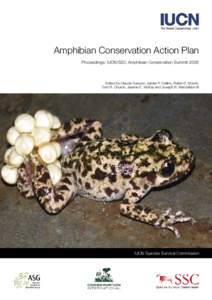 Date: 2014-07-15 22:19:30Conservation biology Decline in amphibian populations Amphibian IUCN Species Survival Commission Chytridiomycosis Biodiversity Extinction Endangered species Key Biodiversity Areas Environment Biology Conservation | |  Amphibian Conservation Action Plan Proceedings: IUCN/SSC Amphibian Conservation Summit 2005 Edited by Claude Gascon, James P. Collins, Robin D. Moore, Don R. Church, Jeanne E. McKay and Joseph R. Mendelson III Amphibian Conservation Action Plan Proceedings: IUCN/SSC Amphibian Conservation Summit 2005 Edited by Claude Gascon, James P. Collins, Robin D. Moore, Don R. Church, Jeanne E. McKay and Joseph R. Mendelson III
Add to Reading ListSource URL: www.amphibians.orgDownload Document from Source Website File Size: 667,82 KBShare Document on Facebook
|

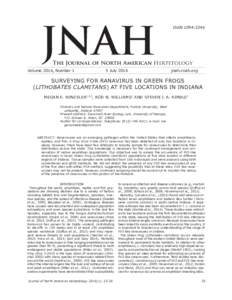
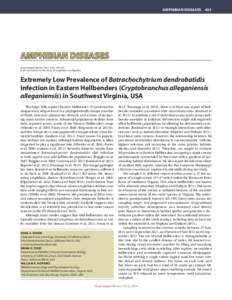
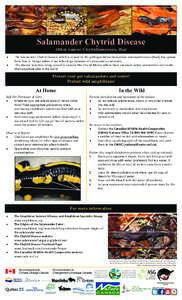
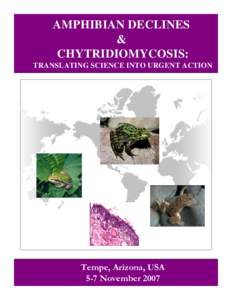
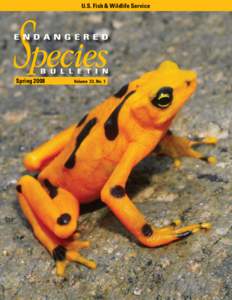
 Amphibian Conservation Action Plan Proceedings: IUCN/SSC Amphibian Conservation Summit 2005 Edited by Claude Gascon, James P. Collins, Robin D. Moore, Don R. Church, Jeanne E. McKay and Joseph R. Mendelson III
Amphibian Conservation Action Plan Proceedings: IUCN/SSC Amphibian Conservation Summit 2005 Edited by Claude Gascon, James P. Collins, Robin D. Moore, Don R. Church, Jeanne E. McKay and Joseph R. Mendelson III